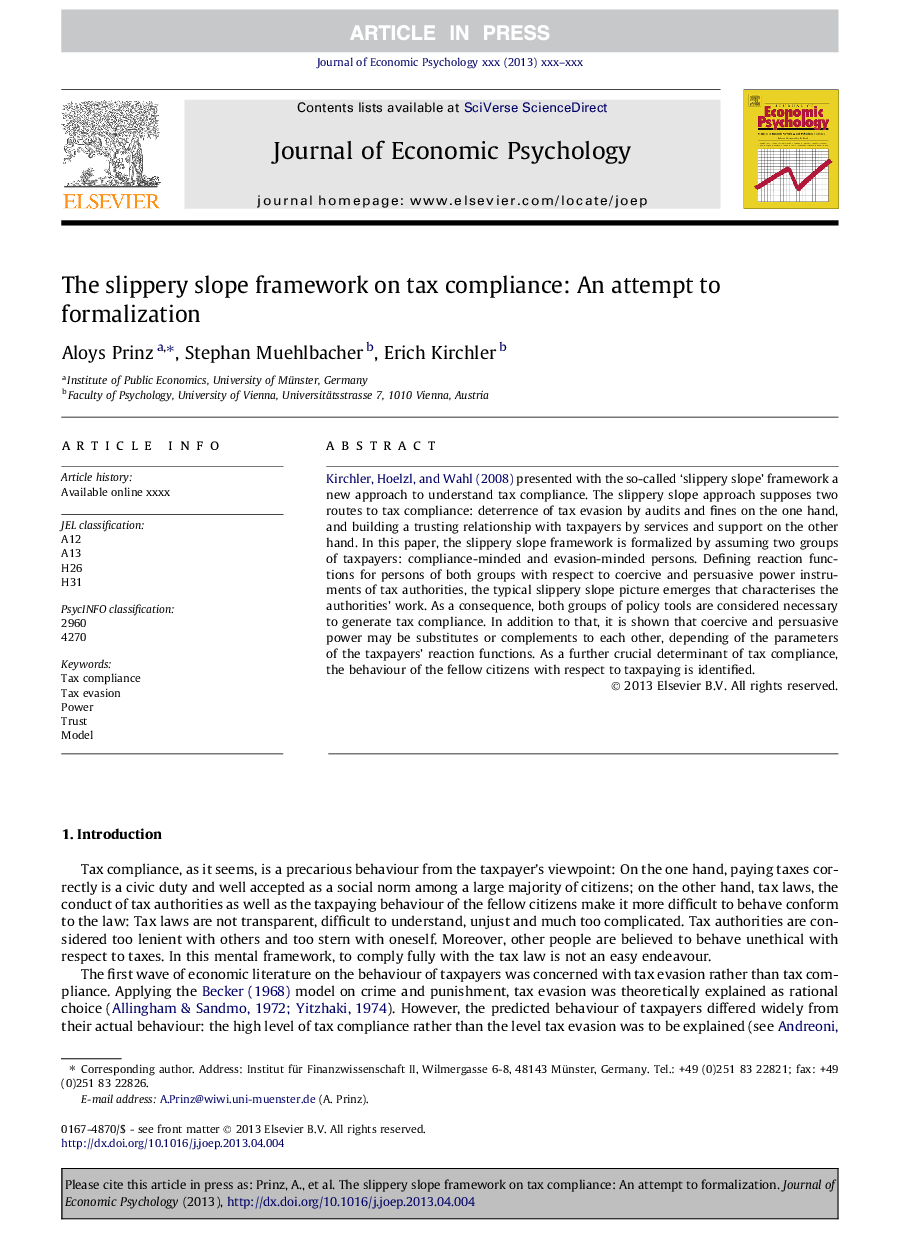| Article ID | Journal | Published Year | Pages | File Type |
|---|---|---|---|---|
| 7244828 | Journal of Economic Psychology | 2014 | 15 Pages |
Abstract
Kirchler, Hoelzl, and Wahl (2008) presented with the so-called 'slippery slope' framework a new approach to understand tax compliance. The slippery slope approach supposes two routes to tax compliance: deterrence of tax evasion by audits and fines on the one hand, and building a trusting relationship with taxpayers by services and support on the other hand. In this paper, the slippery slope framework is formalized by assuming two groups of taxpayers: compliance-minded and evasion-minded persons. Defining reaction functions for persons of both groups with respect to coercive and persuasive power instruments of tax authorities, the typical slippery slope picture emerges that characterises the authorities' work. As a consequence, both groups of policy tools are considered necessary to generate tax compliance. In addition to that, it is shown that coercive and persuasive power may be substitutes or complements to each other, depending of the parameters of the taxpayers' reaction functions. As a further crucial determinant of tax compliance, the behaviour of the fellow citizens with respect to taxpaying is identified.
Related Topics
Social Sciences and Humanities
Business, Management and Accounting
Marketing
Authors
Aloys Prinz, Stephan Muehlbacher, Erich Kirchler,
